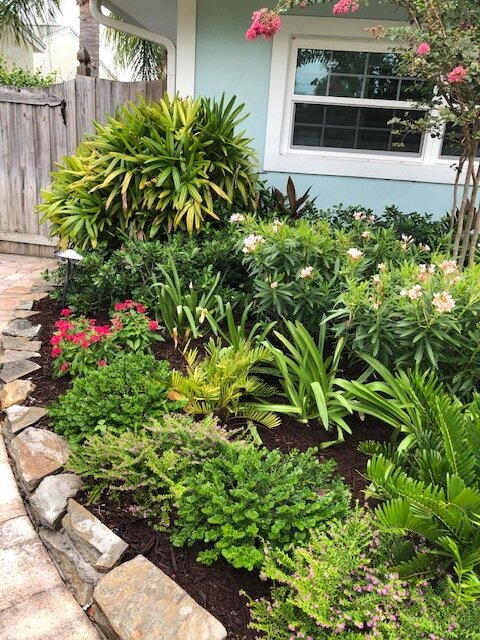I am always looking at homes and landscaping as I travel around the Tampa Bay Area. I look because I am always interested in how homeowners and landscapers combine plants and lay them out. I often get ideas and inspiration. Most times I am disappointed in what I see. Why is that?
Most landscapers tend to stick with the same 12 plants over and over. Homeowners however are more daring in their selections and tend to mix colors and textures nicely. Unfortunately it starts out looking great and then as the plants grow in, the problems begin. Some plants grow much larger than expected, some require more maintenance than expected, some need shade and were planted in the sun and some need sun and were planted in the shade.
What is the common denominator here- not enough correct information!!! That is what is missing. Even with landscapers, they may only have limited knowledge of different varieties of landscape plants.
In this age of vast amounts of information, how can there not be enough information? Well there is actually too much information and it is hard to filter through it all.
Noting the sun variations
If you are trying to plan out an area in your yard, here are some suggestions:
Measure the area and draw it on paper.
Observe the area and note down how much sun it gets at 9:00AM, noon, 3:00 PM and 6:00 PM. If you are doing this in the winter, note that the sun will be higher in the sky in the summer.
Decide if you need shade plants, sun plants or partial shade plants.
Now do your plant research based on that. When you find a plant you like, find out how big it will get and space accordingly. I just saw a “professionally” planted landscape with 5 plants planted in the space where there should be 1!!! If a plant is supposed to spread to 4 feet wide, space that plant 4’ from the center of the next plant.
A great resource for practical plant information is: www.south-Florida-Plant-Guide.com This website was written by someone that worked with plants and gained a great deal of experience. I have found this to be a reliable source of information.
Look for low maintenance shrubs and trees. If you are looking for color, try a flowering shrub instead of flowers which are higher maintenance. Also take advantage of colorful foliage as these leaves make a big impact in the landscape.
Try to buy plants which are tagged by the grower because this ensures you are getting the variety you want. Many plants have numerous varieties that grow different heights and can like different conditions. The different varieties CAN LOOK IDENTICAL when the are young.
I hope these points will help guide you to get plants that will enhance your landscape.


















